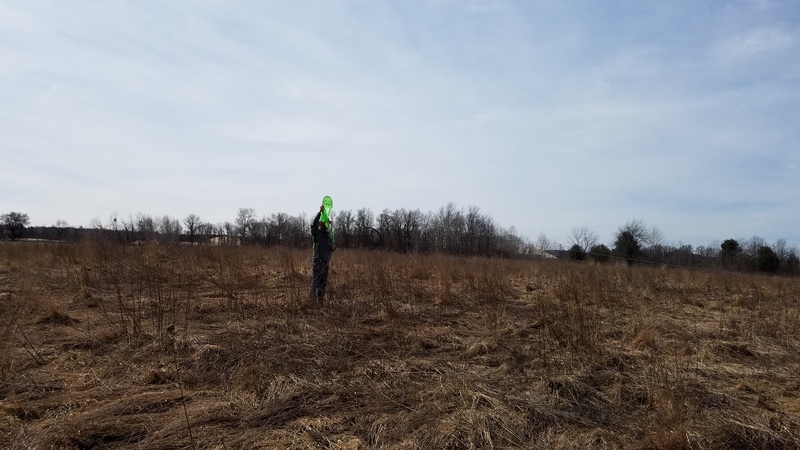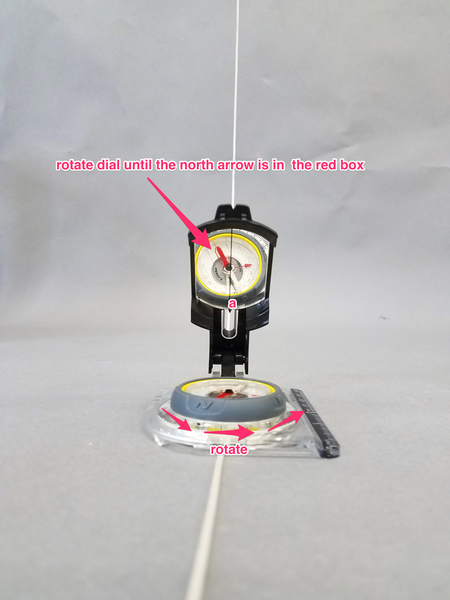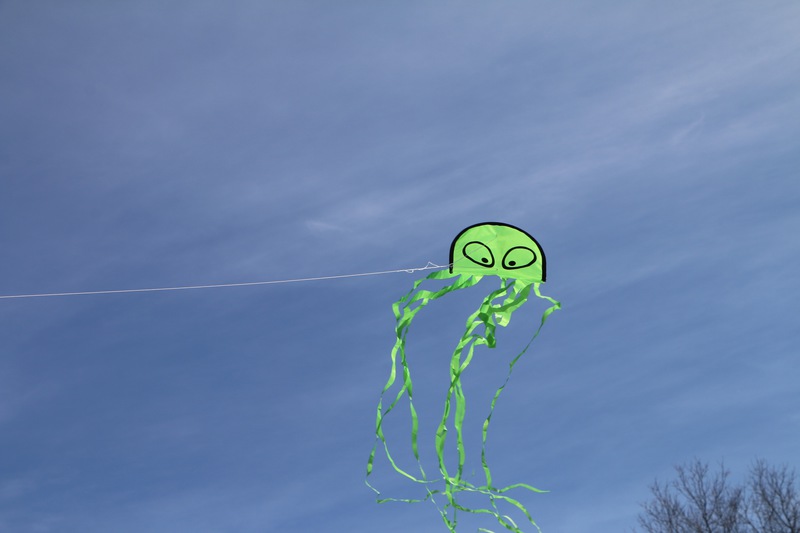determining wind direction with a kite and compass
During PM hotspot monitoring, we launched a small kite to take wind direction measurements above the tree height. These measurements were usually about 10-15° off of our measurements at ground level.
This activity requires at least two people and the following equipment:
- a kite (any kite)
- a sighting compass
- a notebook
Launch the kite
One person can launch a kite, but it works best with two. I’m flying with Gretchen Gehrke
[
Read the wind direction
Wind is usually recorded in the direction it comes from, while we’re going to measure the direction the wind is going & pushing the kite. I.E. a wind out of the Northeast will push the kite Southwest. We will therefore read the compass and then reverse the reading.
Sight down the line of the kite, observing the needle in the mirror. Turn the dial until the north arrow (red) is in the red orienting arrow box.
[
Now look at the compass from the top, and note where the sight indicates the wind’s bearing on the dial. This is the direction the wind is going.
[
Since we are going to record the direction the wind comes from, look at the indicator 180° opposite the sight.
About the kite
While any kite will do, our small octopus kite from Kaixuan Kites is easy to carry, easy to fly and cost $5 at a toystore. These are sometimes sold under the brand Booooom, and are a version of a traditional Japanese octopus (tako) kite. Premier Kites also makes a version.
About the Compass
We used a Brunton TruArc 7 compass, which has both a sighting mirror and an inclinometer. It is very nice and cost about $30. Any magnetic sighting compass with a mirror and dial will do.
Archived 4th of March 2018 from Publiclab.org. Kite anemometers on this site, and on Github.

